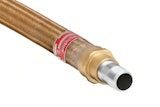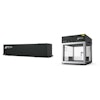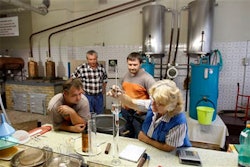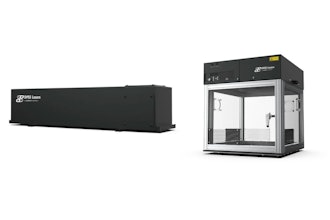This is part two of a two-part piece. Part one can be found here.
Two Heads Are Better than One
Partnering with component providers that offer extensive R&D capabilities can help manufacturers develop a better product faster and with greater efficiency. This is crucial for companies across industries that aim to reduce costs and gain the competitive edge. And the testing doesn’t stop once the component becomes available on the market. Additional R&D work is required for the supplier to take an existing solution that meets 99 percent of a customer’s needs and turn it into an exact fit.
Collaborative application testing involving the parts supplier and the product manufacturer can produce an even more perfectly engineered piece to the puzzle. Through continuous collaboration, a strong partner can develop new solutions to new problems and applications for even further product benefits.
Saint-Gobain utilized this approach in working with Cane Creek Cycling Components (Fletcher, NC) to achieve the world’s lightest headset — a component that connects a bicycle’s forks to its frame. Headsets provide a rotatable interface between the bicycle fork and the frame. Bearings, most commonly rolling element bearings, are applied between these two moving parts to decrease friction, increase performance and reduce the energy output of the cyclist. However, traditional bearings were too heavy for the ultra-lightweight bicycle desired by Cane Creek and its loyal cyclist fans.
Leveraging its global resources, Saint-Gobain’s team worked closely with Cane Creek to develop the NORGLIDE X2 bearing, a new version of its existing NORGLIDE bearing, which is less than one-fourth of the weight of alternatives on the market. The companies worked closely to create the X2 material at the Willich, Germany, R&D facility belonging to Saint-Gobain before measuring the appropriate quantities of the X2 material for the application and finalizing the bearing design with the business unit’s team in Wayne, New Jersey.
The step-by-step R&D collaboration resulted in Cane Creek’s first generation of AER family of superlight headsets — each approximately half the average weight of comparable products on the market. The most recent generation of the AER headsets utilizes NORGLIDE T bearings, which offer greater rigidity.
Getting the Right Support
In short, a good R&D partner must possess the ability to test and trouble-shoot challenges at various stages of component development, alongside the product manufacturer through to implementation. This helps manufacturers get over hurdles and get on with business.
Manufacturers looking for not just a supplier, but an R&D partner should make sure that candidates offer the following:
- Global projects/analytics, meaning the ability to connect projects across multiple facilities and apply previously learned concepts to new applications.
- Product development.
- Technology transfer.
- Manufacturing support.
- Application-driven customer support.
- Extensive capabilities in materials formulation, design control and solutions testing.
Additional capabilities may include structural analysis and mapping of material microstructures and their components, as well as chemistry characterizations to better understand materials and modeling for applications. With these tools, suppliers can minimize time spent on physical testing and potential material waste.
The ability to develop customized approaches to achieving effective solutions is also a crucial characteristic of a potential R&D partner. Just because a process typically works one way doesn’t mean it cannot and should not be changed. The component should be tested both inside and outside the application under different variables to ensure it will remain effective even in the most challenging environments.
For example, when an automotive manufacturer requires a solution to enhance the fluidity of a steering system, the R&D partner should be able to adapt the application testing process to find the right solution.
In automotive steering systems, RENCOL tolerance rings can be applied within hollow steering designs to comply with European Union (EU) and Chinese anti-theft regulations which require steering locks to withstand forces of 100Nm applied through the steering wheel. Tolerance rings provide a cost-effective manufacturing solution that preserves the integrity of the steering system even in attempts of theft. The alternative of manually welding the shaft to the steering column can result in either a weak locking pin in the steering column breaking due to excessive force and the vehicle being stolen or the thief causing significant damage to the steering wheel without succeeding in stealing the vehicle. In light of this, tolerance rings are the preferred fastener for European automotive manufacturers.
What makes a RENCOL tolerance ring adaptable to a given application is its shape, size, number of radial protrusions and its thickness and hardness. These factors can be combined to provide the ideal interference fit. However, the parameters depend on the components used in the car’s steering shaft, and manufacturers should seek a solution customized for their operations. A column comprised of soft steel components calls for a tolerance ring tailor-designed for that material.
Chances that an automotive manufacturer will find a one-size-fits-all solution are slim. To get a precise match, the company may have to work with its supplier to conduct a series of application tests reflecting numerous scenarios. The testing process will likely differ between different types of vehicle manufacturers based in different regions. For the supplier to be a true R&D partner, the company must demonstrate enough flexibility to adjust the process again and again.
Such attention to detail is rigorous but necessary to produce the most effective components for a given application. But manufacturers from the automotive, appliance, bicycle and solar markets don’t have to go it alone. By pairing with component suppliers that offer extensive R&D capabilities and support collaborative application testing, they can find or help create their own “unsung heroes” to enhance product performance and build brand equity.
To read part one of this two-part series, please click here.For more information, please visit www.bearings.saint-gobain.com.























